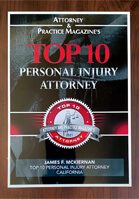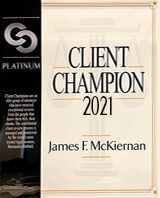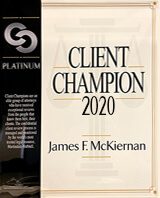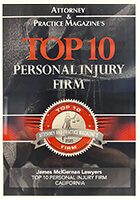What’s the Average Compensation for Being Hit by a Car?

Shortly after an accident, you can expect a call from an insurance adjuster. They might sound helpful, but their job is to resolve your claim for the lowest possible amount. They know you’re stressed and may offer a quick check, hoping you’ll accept it before you understand your rights. This is why knowing the potential value of your claim is so important. While searching for the average compensation for being hit by a car can give you a rough idea, it doesn’t equip you for a negotiation. A true settlement should cover all your medical bills, lost wages, and the personal toll the accident has taken. This guide will explain how these damages are calculated, empowering you with the knowledge to recognize a lowball offer and fight for the fair compensation you rightfully deserve.
Key Takeaways
- Focus on Your Specific Losses, Not Averages: Your settlement value is determined by your unique situation, not a national statistic. It’s a careful calculation of your medical bills (current and future), lost income, and how much fault is shared in the accident.
- Protect Your Claim from the Start: The steps you take immediately after an accident are critical. See a doctor right away to document your injuries and avoid accepting a quick, lowball offer from an insurance company before you know the full cost of your recovery.
- An Attorney Calculates Your Claim’s True Value: A fair settlement covers more than just bills. An experienced lawyer ensures your compensation includes non-economic damages like pain and suffering and negotiates effectively to counter the insurance company’s goal of paying as little as possible.
What Is the Average Payout for a Car Accident?
After a car accident, one of the first questions that comes to mind is, “What is my case worth?” It’s a completely valid question. You’re dealing with medical bills, car repairs, and time off work, so you need to know what kind of financial recovery is possible. While there’s no magic calculator that can spit out an exact number, we can look at data to get a general idea of what’s typical.
Every car accident is unique, and the final settlement amount depends on dozens of specific details, from the severity of your injuries to the clarity of who was at fault. National statistics show that the average claim for bodily injury after a crash was around $20,235, while property damage claims averaged about $4,711. However, these numbers are just a starting point. A minor fender-bender will have a vastly different value than a multi-car pileup with serious injuries. The key is to understand the factors that contribute to your specific case value, which is where an experienced attorney can provide the most clarity.
Breaking Down Settlement Ranges
Settlement amounts can vary dramatically. For accidents involving minor injuries like whiplash and minimal property damage, settlements might fall in the $2,500 to $25,000 range. However, when injuries are severe—think traumatic brain injuries or spinal damage—the settlement value starts much higher, often beginning at $50,000 and potentially reaching hundreds of thousands of dollars or more. The circumstances of the accident also play a huge role. For example, the average payout for a pedestrian hit by a car is significantly different because of the higher likelihood of serious injury. Ultimately, these ranges show how much compensation can vary widely based on factors like injury severity and insurance coverage.
Median vs. Average: Why It Matters
You’ll often hear the terms “average” and “median” used when discussing settlements, and it’s important to know the difference. An “average” is calculated by adding up all the settlement amounts and dividing by the number of cases. This number can be easily skewed by a few multi-million dollar payouts, making the average seem higher than what is typical. The “median,” on the other hand, is the middle number in a list of settlements. Many legal experts consider the median a more reliable figure for understanding what a standard case might be worth because it isn’t affected by those extremely high or low outliers. Knowing this helps you set more realistic expectations for your own case.
What Factors Determine Your Settlement Amount?
If you’re wondering what your case might be worth, it’s important to know that there’s no magic formula or online calculator that can give you an exact number. Every accident is unique, and your settlement amount depends on a combination of specific factors. Think of it less like a fixed price tag and more like a puzzle where each piece—from the details of the accident to your recovery process—helps form the complete picture of what you’re owed.
Understanding these key elements can help you see why a fair settlement isn’t just an arbitrary number, but a carefully calculated amount designed to cover your losses. We’ll walk through the main factors that insurance companies and lawyers look at to determine a settlement value. This will give you a clearer idea of how your compensation is shaped by the severity of your injuries, who was at fault, the insurance policies involved, and the financial costs you’ve had to face.
The Severity of Your Injuries
It makes sense that the more serious your injuries are, the higher your settlement is likely to be. This is because severe injuries come with higher costs and a greater impact on your life. We’re not just talking about the initial hospital bills, but the entire scope of your medical care—follow-up appointments, physical therapy, prescription medications, and any future surgeries you might need.
More serious injuries often mean more time away from work, leading to significant lost income. They can also result in long-term or permanent disabilities that affect your ability to earn a living and enjoy life as you did before. A case involving a traumatic brain injury, for example, will have a much higher value than one with minor cuts and bruises because the long-term consequences are far more extensive.
How Fault Is Determined (Comparative Negligence)
In California, who was at fault for the accident plays a huge role in your settlement. Our state follows a “pure comparative negligence” rule. This sounds complicated, but the idea is simple: your settlement is reduced by your percentage of fault. For example, if you were found to be 20% at fault for the accident, your final settlement amount would be reduced by 20%.
Let’s say you were a pedestrian crossing the street outside of a crosswalk when a speeding car hit you. A court might decide you were 10% at fault. If your total damages were $100,000, you would receive $90,000. The good news is that under this California law, you can still recover compensation even if you were partially to blame for the incident.
The Role of Insurance Coverage
The reality of any personal injury case is that your settlement is often limited by the amount of insurance coverage available. The at-fault driver’s insurance policy has a maximum amount it will pay out, known as the policy limit. In California, the minimum liability coverage for bodily injury is just $15,000 per person and $30,000 per accident.
If your medical bills and other losses exceed this amount, the insurance company won’t pay a penny more, even if your claim is worth it. This is where things can get tricky. If the at-fault driver has minimal coverage, we may need to look for other sources of compensation, like your own underinsured motorist coverage if you have it.
Calculating Medical Bills and Lost Income
The most straightforward part of your settlement calculation involves adding up your financial losses. These are often called “economic damages” because they have a clear dollar value. We start by gathering all of your medical bills—from the ambulance ride and emergency room visit to physical therapy and future care recommendations from your doctors.
We also calculate every dollar you’ve lost from being unable to work. This includes not just your regular salary but also any overtime, bonuses, or commissions you missed out on. To do this, we use documents like pay stubs, employment records, and tax returns to build a clear and undeniable record of your lost income. These concrete numbers form the financial foundation of your claim.
How Do Different Injuries Affect Your Payout?
When it comes to a car accident settlement, the single biggest factor influencing the amount is the severity of your injuries. It’s a straightforward concept: the more an injury impacts your health, your finances, and your daily life, the more compensation you’ll need to recover. A settlement isn’t just about covering the initial hospital bill. It’s designed to account for everything you’ve lost and everything you’ll need moving forward. Think of it as a comprehensive financial plan for your recovery.
This includes all your medical expenses—from the ambulance ride to future surgeries and physical therapy. It also covers lost wages if you couldn’t work, and even your diminished capacity to earn an income in the future. Beyond these concrete financial losses, a settlement also accounts for the physical pain and emotional distress you’ve endured. This is why understanding personal injury damages is so crucial. So, while a sprained ankle and a traumatic brain injury both stem from an accident, their long-term consequences are worlds apart, and the compensation reflects that reality. Let’s look at how different levels of injury typically translate into settlement ranges.
Compensation for Minor Injuries
First, let’s be clear: no injury feels “minor” when it’s happening to you. In legal terms, however, minor injuries are typically those you can fully recover from without long-term complications. This includes things like whiplash, sprains, bruises, or even a simple broken bone. While these injuries might not be life-altering, they can still cause significant pain, disrupt your life, and lead to a stack of medical bills. Settlements for these types of cases generally range from $10,000 to $75,000. This amount is calculated to cover your emergency room visit, follow-up appointments, physical therapy, and any wages you lost while taking time off to heal.
Payouts for Severe Injuries
Severe injuries are those that have a much more significant and lasting impact on your life. We’re talking about things like major fractures that require surgery, internal organ damage, or a herniated disc. These injuries often involve a long and painful recovery process, extensive medical treatment, and a substantial amount of time away from work. Because the financial and personal costs are so much higher, settlements for severe injuries can exceed $100,000 and, in some cases, reach over $1 million. The final amount depends heavily on the specifics, like the total cost of your medical care and whether you’re left with any permanent limitations that affect your ability to earn a living.
Maximum Compensation for Catastrophic Injuries
Catastrophic injuries are truly life-altering. These are the most serious injuries, such as spinal cord damage that causes paralysis, a severe traumatic brain injury (TBI), amputation, or third-degree burns over a large part of the body. The consequences are permanent and profound, often requiring a lifetime of medical care, assistive devices, and in-home support. Because these injuries completely change a person’s life and ability to care for themselves, the compensation must reflect that. Payouts can range from $500,000 to well over $2,000,000. This substantial amount is intended to cover lifelong medical needs, lost income, and the immense pain and suffering endured.
How Does Insurance Impact Your Settlement?
After an accident, your focus is rightly on your health and recovery. But when it comes to financial compensation, the conversation almost always involves insurance. The reality is that the amount of insurance coverage available plays one of the biggest roles in determining the final settlement you receive. We can calculate the full extent of your damages—from medical bills to lost wages and pain and suffering—but the at-fault party’s insurance policy often sets a hard limit on what can be recovered directly from their provider.
Understanding how these policies work is the first step in managing your expectations and building a strong strategy for your case. The at-fault driver’s liability coverage is the primary source of compensation. However, as we’ll see, the limits on that policy can create significant challenges, especially in cases involving serious injuries. This is why we also need to look at other potential sources of recovery, including your own insurance coverage, to ensure you get the support you need. It’s a complex puzzle, and knowing where to look for compensation is key to making sure you aren’t left with overwhelming bills after someone else’s mistake.
Understanding Insurance Policy Limits
Think of an insurance policy limit as a cap on the maximum amount an insurer will pay for a single claim. In California, drivers are required to carry minimum liability coverage, but these amounts are often shockingly low. The state minimum is just $15,000 for injury to one person and $30,000 for all injuries in a single accident. If your medical bills and other damages add up to $75,000, but the at-fault driver only has the minimum $15,000 policy, their insurance company is only obligated to pay that $15,000. This is true no matter how severe your injuries are. This is a common and frustrating situation that leaves many accident victims with substantial uncovered expenses.
What Is Underinsured Motorist Protection?
So, what can you do when the at-fault driver’s policy doesn’t cover all your costs? This is exactly why Underinsured Motorist (UIM) protection is so important. UIM is a part of your own auto insurance policy that you can use when the other driver doesn’t have enough coverage to pay for your damages. It acts as a safety net, allowing you to file a claim with your own insurance company to bridge the gap. If you have this coverage, you can recover the difference between your total damages and the at-fault driver’s policy limit, up to the limit of your own UIM policy. We always recommend carrying as much UIM coverage as you can comfortably afford, as it protects you and your family from the financial consequences of an accident with an underinsured driver.
What if Insurance Doesn’t Cover Your Costs?
Even with UIM coverage, other factors can affect your final payout. California uses a “comparative negligence” rule, which means your settlement can be reduced if you are found partially at fault for the accident. For example, if you are deemed 10% responsible, your total settlement award will be reduced by 10%. Insurance companies often use this rule to try and minimize what they have to pay. They also frequently make quick, lowball settlement offers, hoping you’ll accept before you understand the true value of your claim. This is why it’s so important not to rush. If you can afford to be patient, you give your legal team time to build a strong case and negotiate a fair settlement that truly covers your long-term needs.
What Damages Can You Claim in a Settlement?
After an accident, the term “damages” refers to the total losses you’ve suffered. A fair settlement should provide compensation for every single one of these losses, not just the obvious ones. Think of it as the financial recovery you need to get your life back on track. These damages are generally broken down into two main categories: those with a clear price tag and those without. Understanding both is the first step toward ensuring you don’t settle for less than you deserve. An experienced attorney can help you identify and calculate all the damages that apply to your specific situation, making sure nothing is overlooked.
Economic Damages (Your Financial Losses)
Economic damages are the most straightforward part of a settlement because they cover your direct financial losses. These are the costs you can prove with bills, receipts, and pay stubs. We’re talking about every dollar you’ve had to spend or have lost because of the accident. This includes all your medical expenses, from the initial ambulance ride and emergency room visit to ongoing physical therapy and future surgeries. It also covers lost wages if you were unable to work, as well as any damage to your vehicle or other personal property. Keeping meticulous records of these expenses is crucial for building a strong claim and getting the full amount you are owed.
Non-Economic Damages (Pain and Suffering)
Non-economic damages compensate you for the immense personal toll the accident has taken on your life—losses that don’t come with a simple invoice. This is often referred to as “pain and suffering,” and it includes physical pain, emotional distress, anxiety, and the loss of enjoyment of life. For example, you may no longer be able to participate in hobbies you once loved or play with your children in the same way. While it’s much harder to assign a dollar value to this kind of suffering, it is a very real and significant part of your experience, and you deserve to be compensated for it.
Planning for Future Medical Needs
A critical mistake many people make is accepting a settlement that only covers their current medical bills. If your injuries have long-term consequences, your settlement must account for all future medical needs. This could include ongoing treatments, prescription medications, necessary medical equipment, or in-home care. Serious injuries that lead to chronic pain or a permanent disability will rightfully result in a higher settlement amount. An experienced lawyer will often consult with medical experts to accurately project these future costs, ensuring your settlement provides the financial security you need for the road ahead.
What Should You Do Immediately After an Accident?
The moments after a car accident are a blur of adrenaline and confusion. It’s hard to think clearly, but the actions you take right away can have a huge impact on your health and your ability to get fair compensation later. If you’ve been hit by a car, it’s important to understand what to do afterward to help your case. Think of this as your immediate checklist to protect yourself.
First Steps to Take at the Scene
Your top priority is safety. First, check yourself and your passengers for injuries and call 911 immediately to request medical help and report the accident. If you can, move your vehicle to the side of the road to avoid further danger. Once you’re in a safe spot, exchange information with the other driver—get their name, phone number, driver’s license number, and insurance details. It’s also smart to snap a photo of their license plate. When discussing the accident, stick to the facts and never admit fault. If there are witnesses, ask for their names and phone numbers. Their account can be incredibly valuable. Finally, use your phone to document everything: take pictures of the vehicle damage, the accident scene, and any visible injuries.
The Importance of Medical Records
Please, see a doctor as soon as possible after an accident, even if you feel fine. The shock and adrenaline can mask pain, and some serious conditions, like internal injuries or whiplash, have delayed symptoms. Getting a medical evaluation right away is crucial for your health and for proving your injuries later. A doctor’s visit creates an official record that links your injuries directly to the accident. Once you’ve been seen, follow your doctor’s orders. Go to all your follow-up appointments, take prescribed medications, and attend physical therapy sessions. Following the treatment plan shows that you’re taking your recovery seriously, which is vital for both your well-being and the strength of your legal claim.
How to Gather Essential Evidence
While you focus on healing, start a file to keep all your accident-related documents organized. You’ll want to collect the official police report, photos and videos from the scene, any witness statements you gathered, and all of your medical records. This includes everything from emergency room bills to receipts for prescription medications. It’s also helpful to keep a simple journal detailing your pain levels, symptoms, and how the injuries are affecting your daily life. This collection of evidence tells the complete story of your accident and its aftermath. An experienced lawyer can help you build a strong case by organizing this evidence and dealing with the insurance companies on your behalf, letting you focus on what matters most—getting better.
What Common Mistakes Can Lower Your Settlement?
After an accident, it’s completely normal to feel overwhelmed and want to put the experience behind you as quickly as possible. Unfortunately, this is often when costly mistakes are made. Insurance companies are aware of this vulnerability and may use it to their advantage. Their primary goal is to protect their bottom line, which means paying out as little as possible on claims.
Navigating the settlement process without understanding the common pitfalls can significantly reduce the compensation you receive. Simple missteps—like talking to an insurance adjuster without legal guidance, putting off a doctor’s visit, or accidentally admitting partial fault—can be used to weaken your claim. Knowing what to avoid is just as important as knowing what to do. By being mindful of these potential errors, you can protect your rights and put yourself in a much stronger position to secure the fair compensation you need to recover fully.
The Danger of Accepting a Quick Offer
Soon after your accident, you’ll likely get a call from the other party’s insurance adjuster. They might sound friendly and concerned, but it’s important to remember their objective. Insurance companies often start with low offers, hoping you’ll accept quickly before you realize the full extent of your injuries and financial losses. This initial amount might seem like a relief, but it rarely covers future medical treatments, ongoing lost wages, or long-term pain and suffering. Accepting it means you forfeit your right to seek further compensation. Before you agree to anything, it’s critical to understand what a good settlement offer truly looks like.
Why You Shouldn’t Delay Medical Care
Your health should always be your top priority after an accident. Seeking immediate medical attention is not only essential for your recovery but also for the strength of your legal claim. Delaying a visit to the doctor gives the insurance company an opportunity to argue that your injuries aren’t serious or that they were caused by something other than the accident. A medical professional’s diagnosis creates an official record linking your injuries directly to the incident. Following through with all prescribed treatments and appointments is crucial for your health and for proving your injuries later on, creating a clear and undeniable timeline for your case.
Misunderstanding Your Share of Fault
California operates under a “comparative negligence” rule. This means you can still recover damages even if you were partially responsible for the accident, but your settlement will be reduced by your percentage of fault. For example, if you are found to be 20% at fault, your final compensation will be reduced by 20%. Because a pedestrian or driver who shares some blame for the accident might get less money, you should never admit fault at the scene or to an insurance adjuster. Determining fault is a complex legal process, and casual statements like “I’m sorry” can be twisted and used against you to lower your payout.
How Long Does It Take to Get a Settlement?
One of the first questions on everyone’s mind after an accident is, “How long will this take?” It’s a completely valid question. You have bills piling up and you want to get back to your life. The honest answer is: it depends. Every case is unique, and the timeline for reaching a settlement can range from a few months to a couple of years.
The path to a settlement isn’t always a straight line. It involves gathering evidence, negotiating with insurance companies, and ensuring your long-term needs are fully accounted for. While a quick payout might sound appealing, our goal is to secure the full and fair compensation you deserve, and that process takes careful, dedicated work. Rushing can mean leaving money on the table that you’ll need for future care. Let’s walk through the factors that shape your settlement timeline and what you can generally expect.
Factors That Influence the Timeline
Several key factors determine how long it takes to resolve your claim. The complexity of your case is a major one. A straightforward rear-end collision where fault is clear will typically move faster than a multi-car pileup with disputed liability. The insurance company’s responsiveness also plays a big role. In California, insurers generally have 40 days to accept or deny a claim after you’ve submitted the required documents, but delays can still happen.
Another significant factor is the severity of your injuries. If your injuries are minor and you recover quickly, your claim can be calculated and settled sooner. However, if you’ve suffered serious injuries that require long-term treatment, it’s crucial to wait until you’ve reached what’s known as Maximum Medical Improvement (MMI). This is the point where your doctor can confidently predict your future medical needs, which is essential for calculating the true value of your claim.
When to Expect Your Payment
So, what does this all mean for your timeline? Generally, many car accident cases settle within six to 18 months. However, if your case involves severe injuries, requires extensive investigation, or ends up going to trial, it could take two years or more to reach a resolution. While that might sound like a long time, patience is your greatest asset during this process.
Accepting an early settlement offer from an insurance company before you understand the full extent of your injuries is one of the biggest mistakes you can make. You might not know if you’ll need future surgeries, physical therapy, or other ongoing care. Once you accept a settlement, you can’t go back and ask for more money later. Waiting until you and your legal team have a complete picture of your damages ensures the final settlement truly covers all of your past, present, and future costs.
When Is the Right Time to Call a Lawyer?
After an accident, you’re dealing with injuries, medical appointments, and the overwhelming stress of it all. Wondering when to call a lawyer can feel like one more thing on your to-do list. The simplest answer is this: if you’ve been injured, it’s best to talk to an experienced car accident lawyer as soon as possible. The moments and days immediately following a collision are critical for building a strong case, and getting professional guidance early on can make a significant difference in the outcome. It’s not about rushing to file a lawsuit; it’s about protecting your rights from the very beginning.
Why an Early Consultation Helps
Contacting a personal injury lawyer soon after your accident is one of the most important steps you can take. Critical evidence can disappear quickly—witness memories fade, and physical evidence at the scene can be lost. An attorney can immediately begin to gather police reports, photos, and witness statements to preserve the facts of your case. More importantly, a lawyer helps you understand your rights and what to do next. We can handle communications with insurance companies on your behalf, ensuring you don’t say something that could be used against you later. This early guidance helps you avoid common pitfalls and ensures you don’t miss crucial deadlines, like California’s statute of limitations for filing a claim.
How We Fight for the Compensation You Deserve
Insurance companies are businesses, and their primary goal is to protect their bottom line. They often start with low settlement offers, hoping you’ll accept a quick payout before you understand the full extent of your damages. This is where we step in. Having an experienced personal injury lawyer on your side levels the playing field. We know how to accurately value your claim, factoring in everything from current medical bills and lost wages to future treatment needs and pain and suffering. We build a case supported by strong evidence and negotiate effectively with the insurance company to secure the fair settlement you are entitled to.
Related Articles
- Why You Need a Lawyer for a Car Accident Not Your Fault
- How to Settle a Car Accident Claim (Without a Lawyer)
- FAQ Lawyers – James McKiernan Lawyers
Frequently Asked Questions
Why can’t I just use an online settlement calculator to figure out my case’s value? Those online calculators can be tempting, but they often create a false sense of certainty. They can only process the most basic data, like the amount of your medical bills, and can’t account for the critical details that truly shape a settlement. They don’t understand the specifics of California law, the strength of your evidence, or the long-term impact of your injuries. Most importantly, they have no way to measure your pain and suffering, which is a significant part of what you’re owed. Your experience is unique, and your settlement should reflect that, which is something a generic online tool simply can’t do.
The other driver’s insurance adjuster seems friendly and just wants a statement. What should I do? It’s important to remember that the adjuster’s job is to protect their company’s financial interests, not yours. Even if they sound genuinely concerned, their goal is to settle the claim for the lowest amount possible. Anything you say in a recorded statement can be taken out of context and used to argue that you were partially at fault or that your injuries aren’t as severe as you claim. The safest approach is to politely decline to give a statement until you have spoken with an attorney. You can simply say you aren’t ready to discuss the details and will have your lawyer contact them.
My health insurance is paying my medical bills. Why do I still need a settlement? This is a great question that comes up often. While it’s a relief to have health insurance cover your immediate bills, it doesn’t pay for everything. A settlement is designed to cover all of your losses, including lost wages from time off work and compensation for your physical pain and emotional distress. Furthermore, your health insurance company will likely have a right to be reimbursed for the bills they paid from any settlement you receive. A proper settlement ensures there is enough to pay them back and still provide the full financial recovery you need for all your other damages.
What does “pain and suffering” actually mean and how is it calculated? “Pain and suffering” is the legal term for the human cost of your injuries. It’s compensation for the physical pain, emotional distress, anxiety, and loss of enjoyment of life that you’ve experienced because of the accident. For example, it covers the impact of not being able to play with your kids, enjoy your hobbies, or sleep through the night without pain. There’s no simple receipt for this, so lawyers and insurance companies often use the severity and duration of your injuries to determine a fair value. It’s a critical part of your claim because it acknowledges that the harm you suffered goes far beyond just medical bills.
Why is it so important to wait before accepting a settlement offer? Patience is one of your strongest assets after an accident. Insurance companies often make quick, low offers hoping you’ll accept before you know the true extent of your injuries. It’s crucial to wait until you’ve reached what doctors call “Maximum Medical Improvement,” or MMI. This is the point when your medical team has a clear picture of your long-term prognosis and any future care you might need. If you settle too early, you could be left paying for future surgeries or physical therapy out of your own pocket. Waiting ensures your settlement covers all of your past, present, and future needs.


























